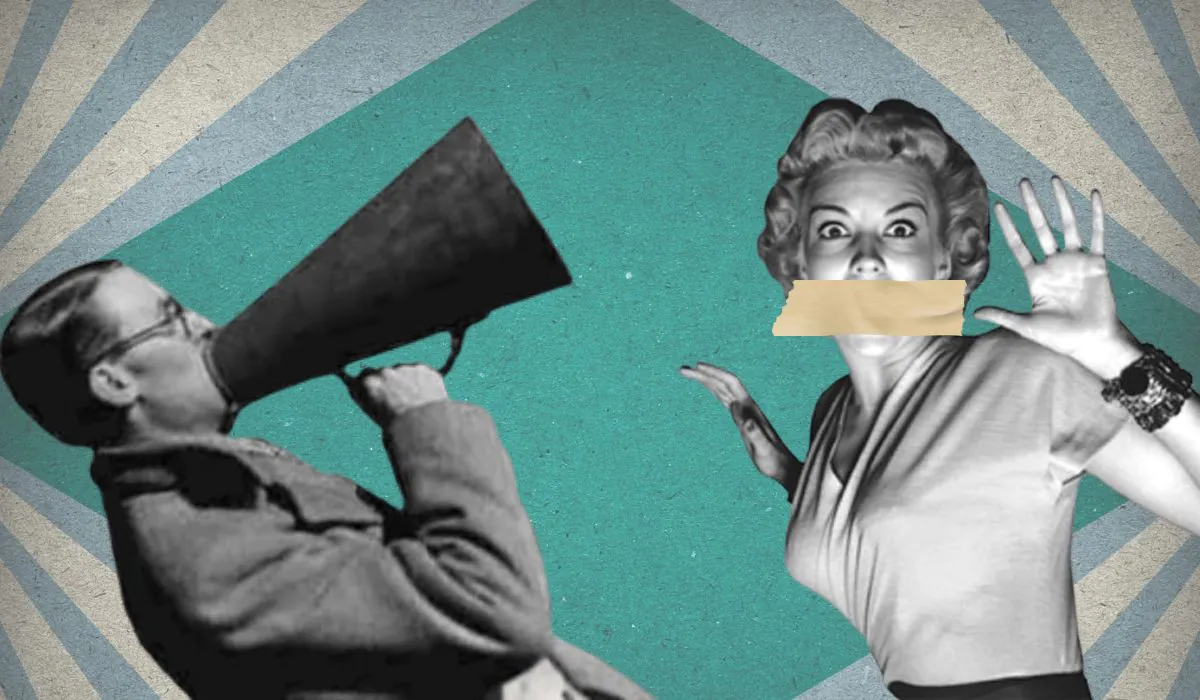

“Situation” in the Kursk region: How Luhansk media follow the Kremlin’s playbooks
For almost three days, the Kremlin was thinking about how to report on the fighting in the Kursk region on television. All this time, Luhansk propagandists were silent, waiting for instructions from above. And when the manual appeared, they obediently repeated what it contained. Realna Gazeta watched how Luhansk media workers followed the instructions from Moscow.
Telegram channels that are not part of the “official” media network of the “Luhansk republic” clique were the first to react to the events in the Kursk region. For example, the Telegram channel “My Luhansk” was the first to repost a video of a plane flying along a road near the Russian border. The channel “Luhansk Incident. LPR” was the first to show photos of destroyed houses in Sudzha.

A day after the so-called “breakthrough” of the border in the Kursk region, Russian dictator Vladimir Putin made his first reaction. However, even then, the “governmental” network of Telegram channels limited itself to broadcasting Putin’s statements about the “situation” and “large-scale provocation” – the Kremlin leader’s description of the fighting in the Kursk region.
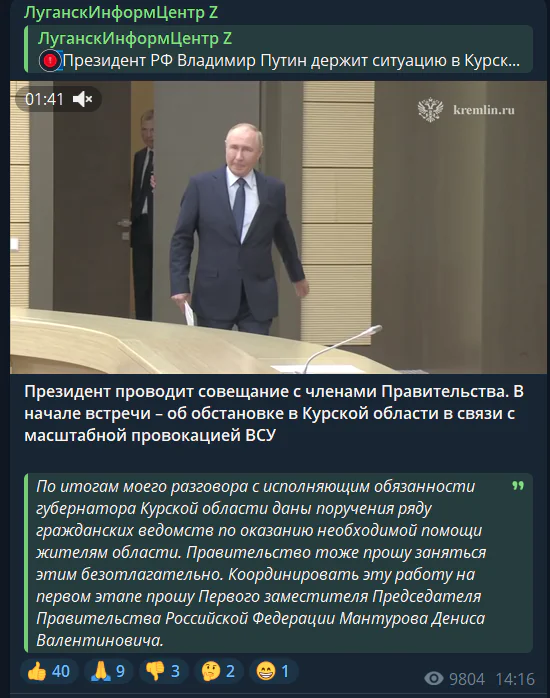
While Russian conscripts surrendered, residents complained about the lack of evacuation, and Z-war correspondents complained about the military command, the LuhanskInformCenter propaganda channel quoted the head of the Russian General Staff, Valery Gerasimov, as saying that the enemy’s advance had been stopped. Luhansk media did not write about the fighting or broadcast it on television.
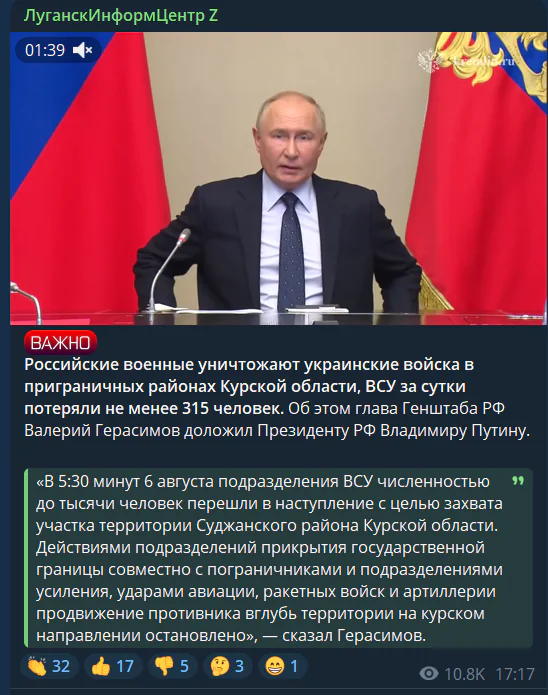
A trend towards grief
Apparently, the first instructions received by propaganda media were to organise “grief”. The first attempts were modest. On the evening of August 7, propagandists brought a toy ambulance and two carnations to the statue of the Virgin Mary. No crowd scenes were applied.
Propagandists from the neighbouring “Donetsk republic” followed the same instructions. They also used the image of an ambulance. They did not search for the toy but just printed the image on paper and brought it to the so-called “Russia” art object on the Lenin Square in Donetsk.
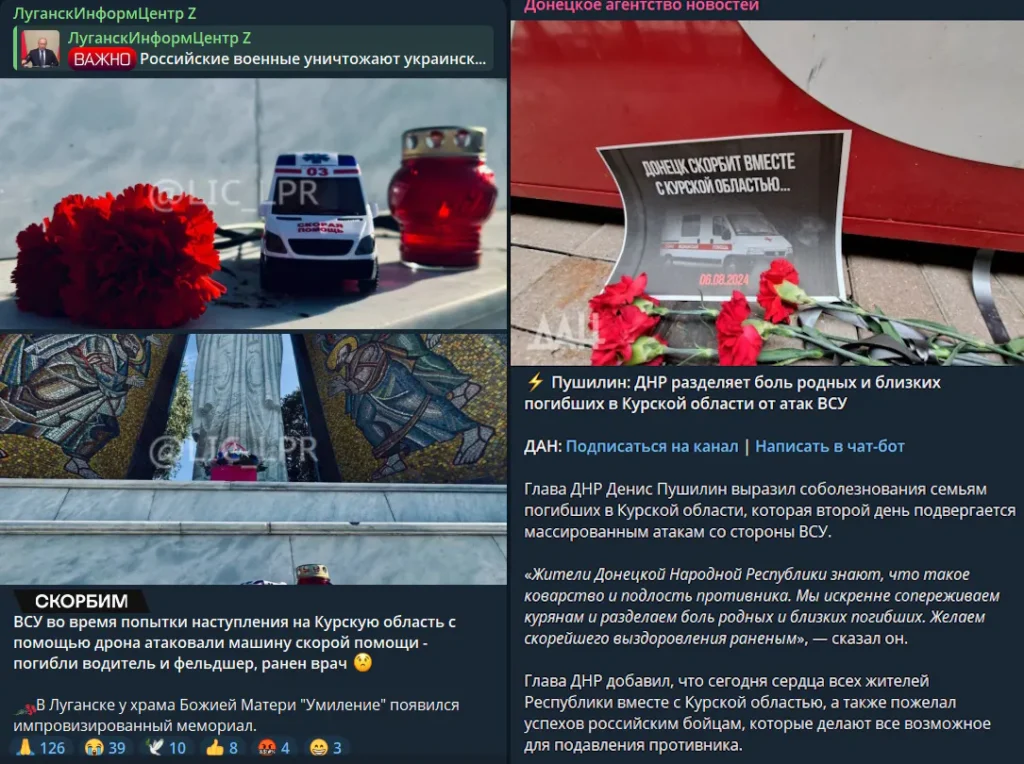
More massive events took place in Luhansk only on the evening of the next day, August 8. Activists of the so-called youth movements (in fact, Russian propaganda centres for young people) arranged the word “Kursk” with candles and took pictures near it. The photos from the event were distributed by the “official” channels network.
The Luhansk and Donetsk events were part of an all-Russian flash mob, when “mourning” events take place simultaneously in different cities of Russia (they also involve the occupied territories). For example, the lighting of the word “Kursk” with candles took place in other Russian cities, which caused surprise among the Russians themselves. It seemed as if they were burying a city of many thousands, even though it was about fighting in several towns in the south of the Kursk region.
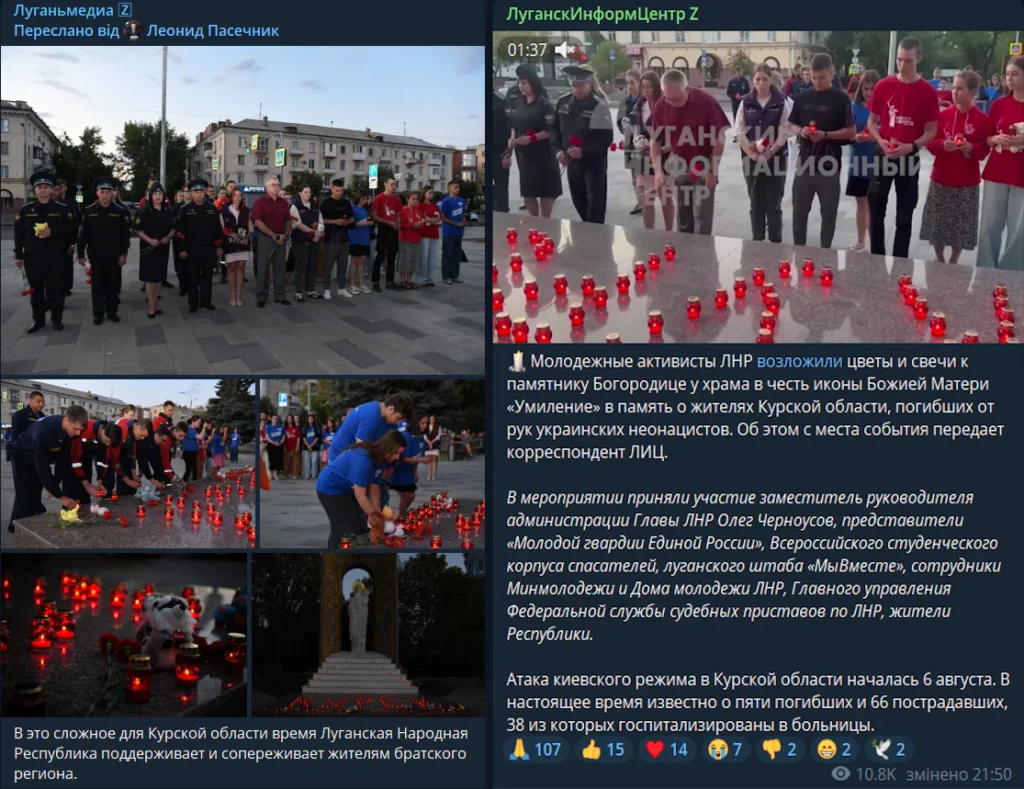
It is enough to compare the photos from the Memory Candle rally in Luhansk and Donetsk to understand that they followed the same scenarios.

At the same time, neither television nor online media gave a more or less complete picture of what was happening in the Kursk region. There were no details about the scale of the destruction or the progress of the military – this gap was filled by various “unofficial” telegram channels. An offered narrative: “Terrible things are happening, so we should not understand the details and motives, but grieve”.
How Luhansk propagandists follow the instructions precisely
In the evening of August 8, the Medusa media outlet, citing its sources, reported on an order from the Russian presidential administration “not to escalate the situation” around the invasion of the Kursk region by the Ukrainian armed forces. Media outlets loyal to the Kremlin were recommended to avoid information about the advance of the Ukrainian military towards the city of Kurchatov, where the Kursk nuclear power plant is located. The Kremlin does not want the fear of a nuclear threat to be added to the outrage over the lack of evacuation from Sudzha and the surrounding areas. Instead, propagandists were recommended to compare the border breakthrough to the Battle of Kursk during World War II.
They were recommended to mention more often the “successes of the Russian army”, which allegedly prevented the Ukrainian military from advancing deeper into the Kursk region. It was also recommended to tell detailed “stories” about the “unity of people” who donate blood and send humanitarian aid to residents of the Kursk region.
Particular emphasis was recommended to be placed on evacuating and accommodating people in temporary shelters, accompanying such messages with the slogan “We do not leave our own in trouble”.
Already on August 9, the puppet media in the occupied territory dutifully repeated this narrative.
In Luhansk, they have already announced the collection of humanitarian aid and even reported on the alleged shipment of the first batch of humanitarian aid. The Luhansk residents who allegedly brought the humanitarian aid were not shown. Instead, they showed a young man who said that the urgent aid from Luhansk “shows our Russian spirit. The fact that we do not abandon our own”.
The so-called activists of youth movements did it, and the propaganda channels voiced the message: “Russia is a great country. We experience joy and sorrow together”. As in the case of the terrorist attack in Crocus City Hall, a narrative is being honed: “Luhansk is a part of Russia”.
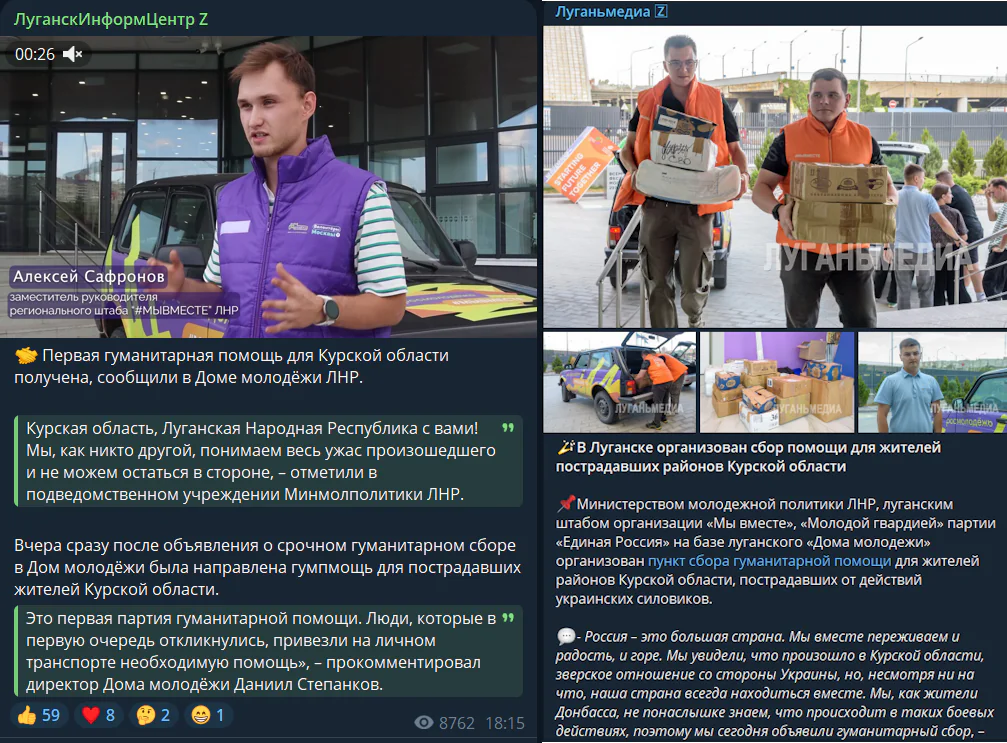
On the evening of August 9, local propagandist Dmitry Krymov spoke about the Kursk Bulge in the studio of Luhansk 24.
“I can’t help but remember. Recently, we were on air on Victory Day and talked about the feats of a Soviet soldier… When I found out about the Kursk region, I still recalled the Kursk Bulge,” he said, following directly one of the instructions from the Kremlin.
At the same time, the leader of the regional branch of the People’s Front in Kherson plunged into similar memories: “I want to remind you that in 1943, one of the turning points was the Battle of Kursk. We won then, in 1945, and we will win today,” he said in a propaganda piece.
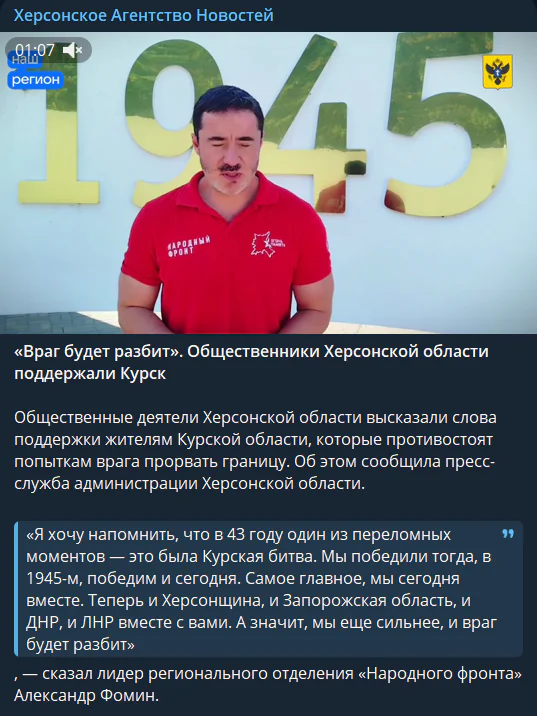
Given that Luhansk propagandists have not managed to voice all the narratives sent from above, we can roughly predict tomorrow’s news in the local media. First of all, Luhansk residents will be told about the victorious advance of Russian troops and the number of Ukrainian soldiers killed (as usual, without any objective confirmation), called to donate blood to the injured residents of the Kursk region, reminded again of the Battle of Kursk and repeatedly recited the slogan “We do not abandon our own”.